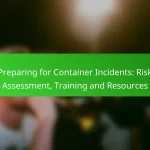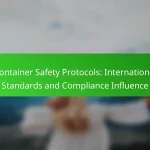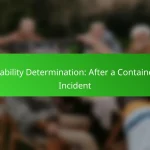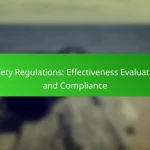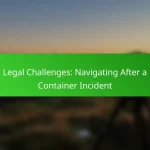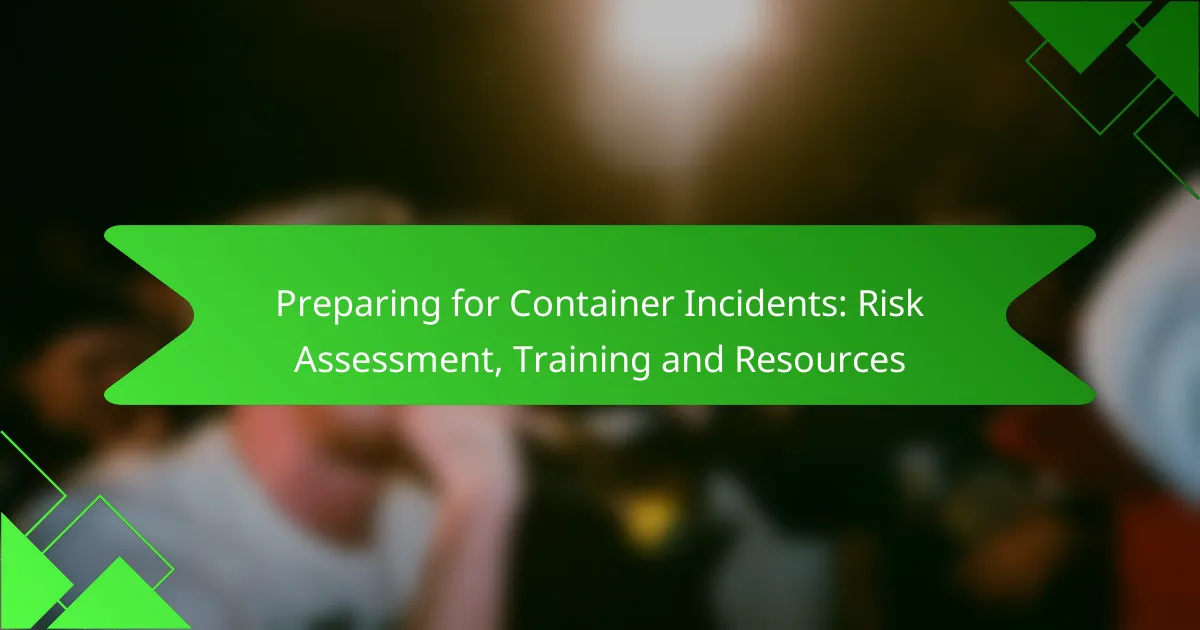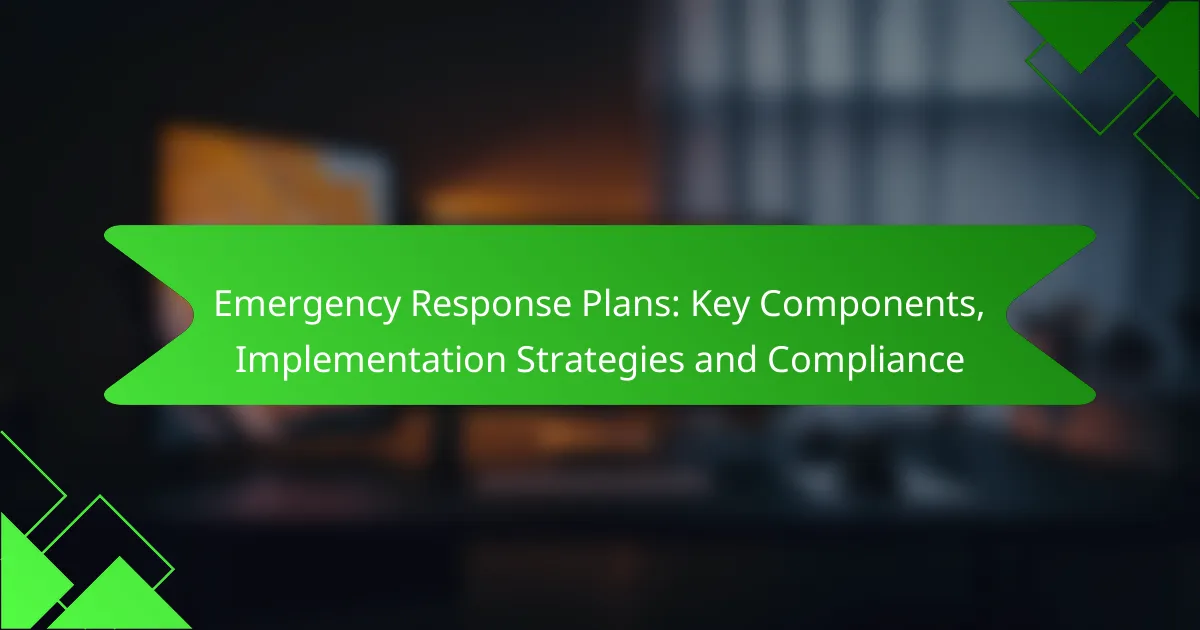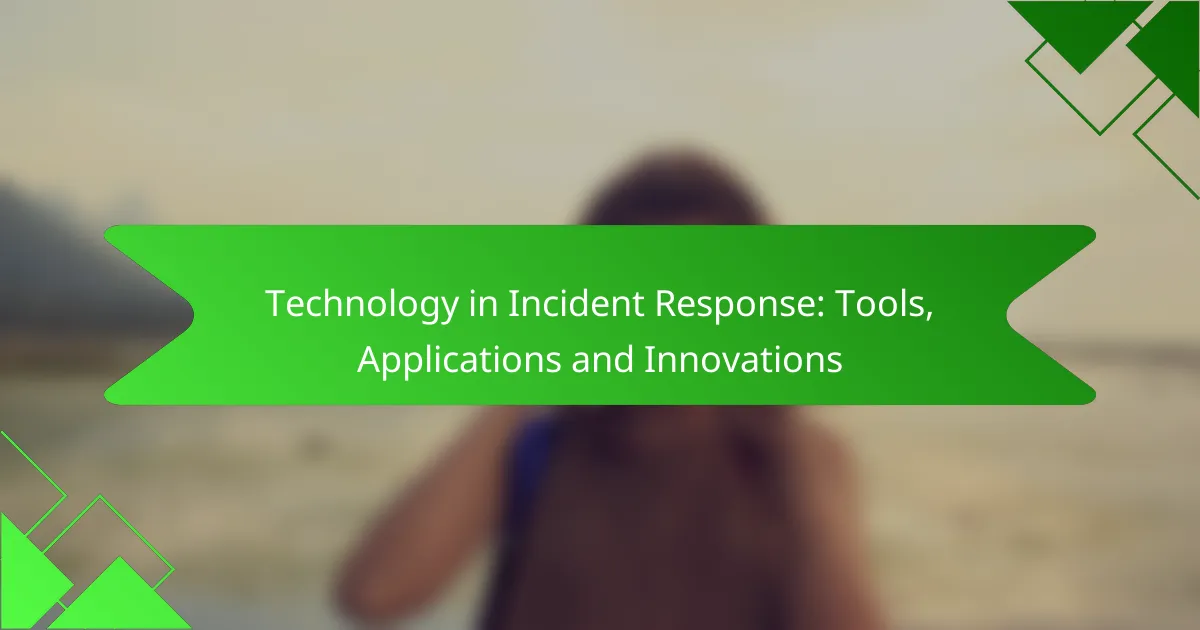Preparing for container incidents is crucial for ensuring safety and minimizing risks in operations. This involves conducting thorough risk assessments, providing comprehensive training for staff, and utilizing various resources to enhance incident management. By systematically identifying hazards and equipping employees with the necessary skills, organizations can effectively respond to potential emergencies.
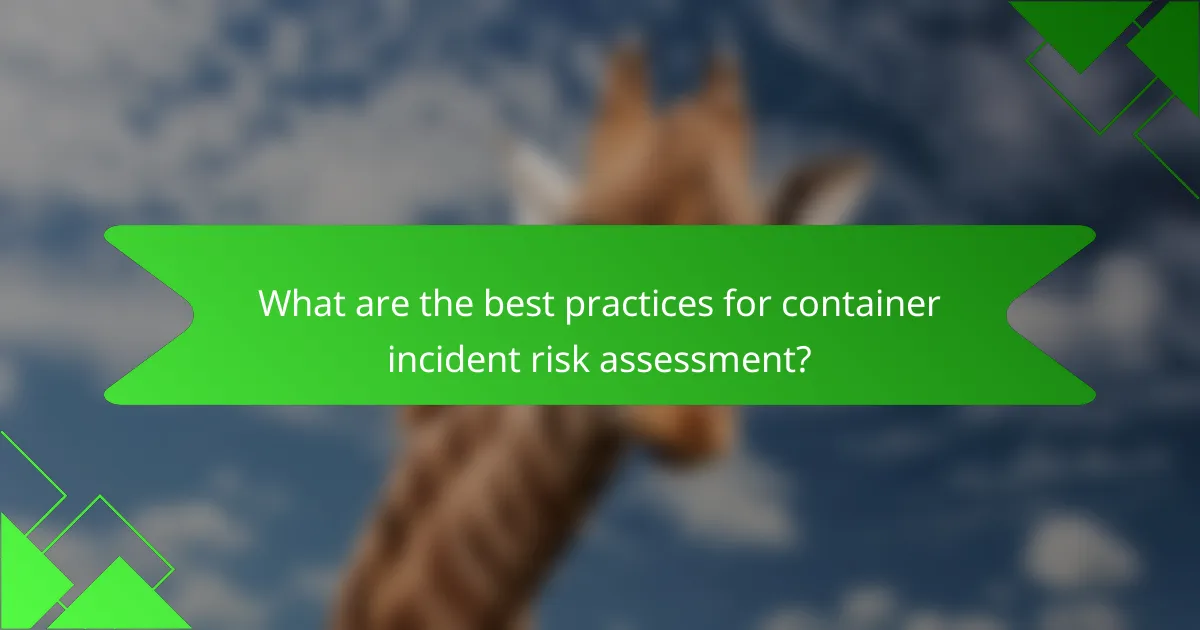
What are the best practices for container incident risk assessment?
Best practices for container incident risk assessment involve systematically identifying hazards, evaluating their potential impact, and implementing effective control measures. This proactive approach helps organizations minimize risks and enhance safety in container operations.
Identify potential hazards
Identifying potential hazards is the first step in risk assessment. Hazards can include physical dangers, such as equipment malfunctions, environmental conditions, or human errors. Conducting thorough inspections and engaging employees in discussions can help uncover less obvious risks.
Consider using checklists to ensure all areas are covered, including loading and unloading procedures, storage conditions, and transportation routes. Regularly updating these checklists based on new information or incidents is crucial.
Evaluate likelihood and impact
Evaluating the likelihood and impact of identified hazards allows organizations to prioritize risks effectively. Use a qualitative scale (e.g., low, medium, high) to assess how often a hazard may occur and the severity of its consequences. This helps in allocating resources efficiently.
For example, a hazard with a high likelihood and severe impact should be addressed immediately, while a low-likelihood, low-impact hazard may require monitoring. Engaging a diverse team in this evaluation can provide different perspectives and insights.
Implement control measures
Implementing control measures involves putting strategies in place to mitigate identified risks. This can include engineering controls, administrative policies, or personal protective equipment (PPE). Each measure should be tailored to the specific hazards present.
For instance, if a risk involves heavy lifting, providing mechanical aids or training on proper lifting techniques can reduce injuries. Regular training sessions can reinforce safe practices and ensure that all employees are aware of the measures in place.
Conduct regular reviews
Regular reviews of the risk assessment process are essential to maintain safety standards. These reviews should be scheduled periodically and after any significant incidents or changes in operations. This ensures that the risk assessment remains relevant and effective.
During reviews, assess the effectiveness of implemented control measures and gather feedback from employees. This can highlight areas for improvement and reinforce a culture of safety within the organization.
Utilize industry standards
Utilizing industry standards can enhance the effectiveness of risk assessments. Standards such as ISO 31000 provide guidelines for risk management processes that can be adapted to container operations. Following these standards helps ensure a systematic approach to identifying and mitigating risks.
Additionally, staying informed about local regulations and compliance requirements is crucial. This not only helps in adhering to legal obligations but also promotes best practices in safety management.
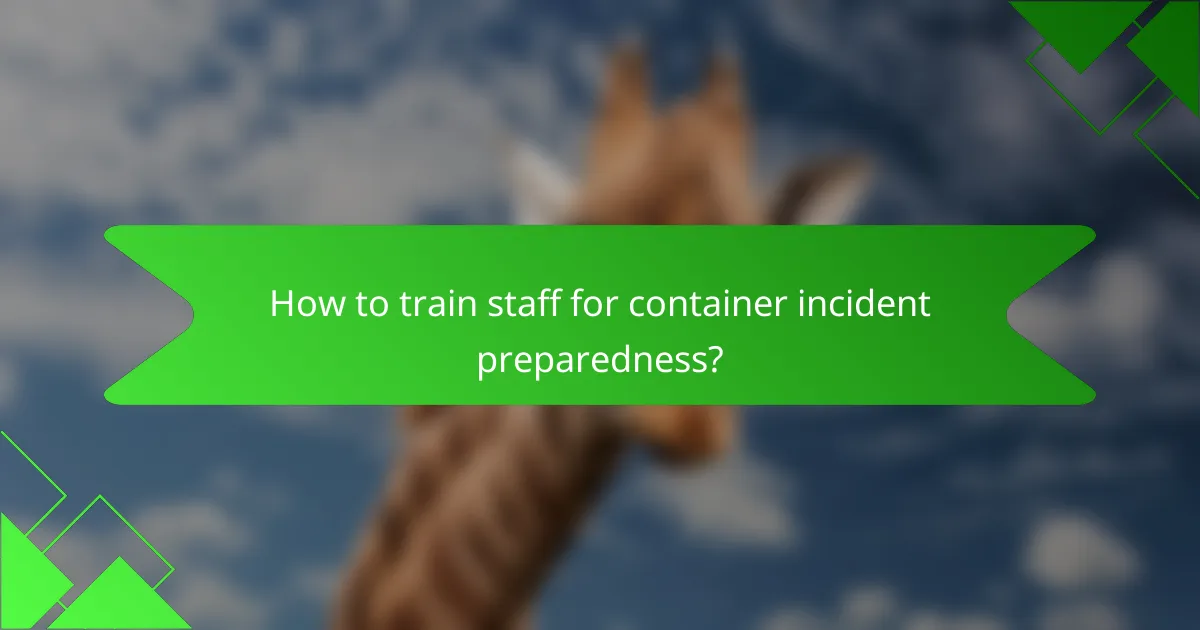
How to train staff for container incident preparedness?
Training staff for container incident preparedness involves structured programs that equip employees with the necessary skills and knowledge to respond effectively to incidents. This training should be comprehensive, covering risk assessment, emergency protocols, and practical response techniques.
Develop training programs
Creating effective training programs is essential for ensuring staff are prepared for container incidents. These programs should include both theoretical knowledge and practical skills, tailored to the specific types of containers and materials handled by the organization.
Consider incorporating various learning methods, such as classroom sessions, online courses, and hands-on workshops. This variety can cater to different learning styles and enhance retention of critical information.
Conduct simulation exercises
Simulation exercises provide a realistic environment for staff to practice their response to container incidents. These drills should mimic potential scenarios, allowing employees to apply their training in a controlled setting.
Regularly scheduled simulations can help identify gaps in knowledge and improve overall readiness. Aim for at least one major exercise per year, supplemented by smaller drills to keep skills sharp.
Provide ongoing education
Ongoing education is crucial for maintaining staff readiness in container incident preparedness. This can include refresher courses, updates on new regulations, and emerging best practices in the industry.
Encourage staff to participate in external training opportunities and certifications relevant to their roles. This continuous learning approach helps ensure that employees remain knowledgeable about the latest safety protocols and technologies.
Engage with industry experts
Engaging with industry experts can significantly enhance your training programs. Experts can provide insights into best practices, emerging trends, and regulatory changes that may impact container handling and incident response.
Consider hosting workshops or webinars led by these professionals, or encourage staff to attend industry conferences. Networking with experts can also foster partnerships that lead to additional training resources and support.
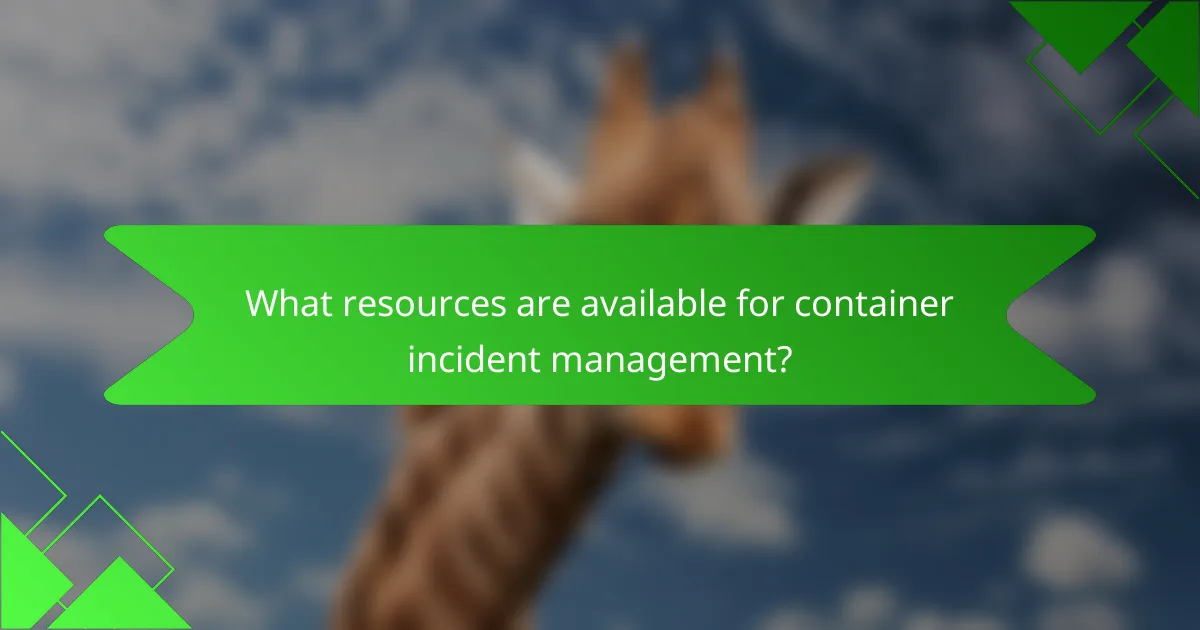
What resources are available for container incident management?
Effective container incident management relies on a variety of resources, including regulatory guidelines, safety equipment suppliers, online training platforms, and local emergency services. Utilizing these resources can enhance preparedness and response strategies for container-related incidents.
Access to regulatory guidelines
Regulatory guidelines provide essential frameworks for managing container incidents, ensuring compliance with safety standards. Familiarize yourself with local regulations, such as those from the Occupational Safety and Health Administration (OSHA) in the U.S. or the European Union’s REACH regulations, which govern hazardous materials.
Regularly review updates to these guidelines to stay informed about changes that may affect your operations. Consider subscribing to industry newsletters or joining professional associations that focus on container safety and compliance.
Utilize safety equipment suppliers
Safety equipment suppliers offer a range of products crucial for managing container incidents, including personal protective equipment (PPE), spill containment kits, and emergency response tools. Identify reputable suppliers that specialize in hazardous materials to ensure you have access to the right equipment.
Establish relationships with these suppliers to facilitate quick access to necessary resources during an incident. Regularly inspect and maintain your safety equipment to ensure it is ready for use when needed.
Leverage online training platforms
Online training platforms provide convenient access to courses on container safety and incident management. Look for platforms that offer certifications in hazardous materials handling, emergency response, and risk assessment to enhance your team’s skills.
Encourage employees to complete these training modules regularly to keep their knowledge current. Consider scheduling refresher courses annually to reinforce best practices and compliance with safety standards.
Connect with local emergency services
Establishing a connection with local emergency services is vital for effective incident management. Invite representatives from fire departments, hazardous materials teams, and medical services to conduct site visits and familiarize themselves with your operations.
Develop a communication plan that outlines how to quickly contact these services in the event of an incident. Conduct joint drills to practice response strategies and ensure that all parties understand their roles during an emergency.
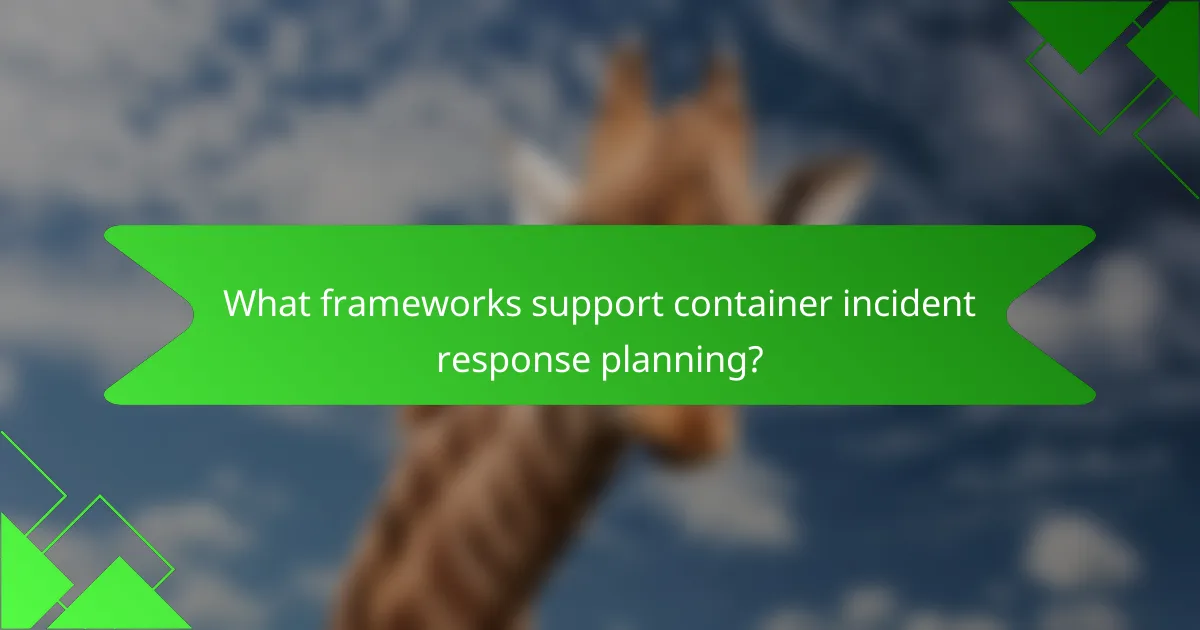
What frameworks support container incident response planning?
Several frameworks provide structured approaches to container incident response planning, including the Incident Command System (ICS) and the National Response Framework (NRF). These frameworks help organizations coordinate their response efforts effectively, ensuring a systematic approach to managing incidents.
Adopt the Incident Command System
The Incident Command System (ICS) is a standardized approach to incident management that allows for effective coordination among various agencies and stakeholders. By adopting ICS, organizations can establish clear roles and responsibilities, which streamlines communication and decision-making during container incidents.
Key components of ICS include the Incident Commander, who oversees the response, and various functional roles such as Operations, Planning, Logistics, and Finance. This structure helps ensure that all aspects of the incident are addressed, from resource allocation to public information dissemination.
Implement the National Response Framework
The National Response Framework (NRF) provides a comprehensive guide for how the nation responds to all types of disasters and emergencies, including those involving containers. It emphasizes the importance of collaboration among federal, state, local, and private sector partners to enhance overall response capabilities.
To implement the NRF effectively, organizations should familiarize themselves with its core principles, such as engaging community partners, ensuring a unified command, and maintaining situational awareness. Regular training and exercises based on NRF guidelines can help teams prepare for real-world incidents, improving their readiness and response times.
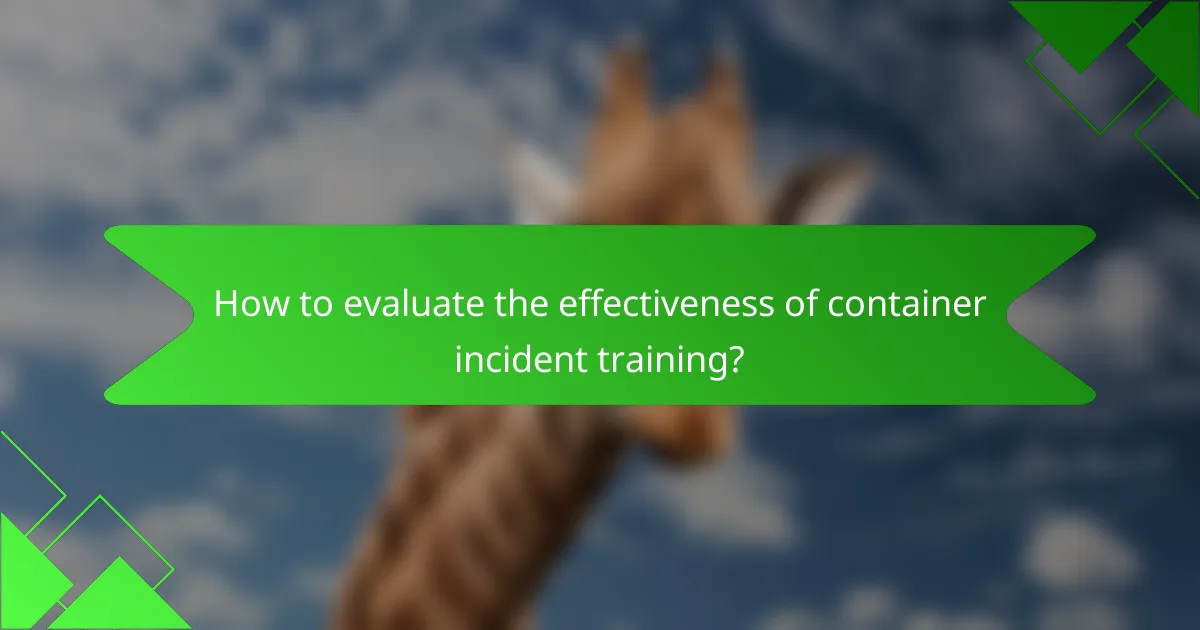
How to evaluate the effectiveness of container incident training?
Evaluating the effectiveness of container incident training involves measuring how well participants understand and can apply their training in real-world scenarios. Key indicators include performance outcomes, participant feedback, and adherence to safety protocols.
Assess training outcomes
To assess training outcomes, organizations should track specific metrics such as incident response times and the accuracy of actions taken during drills. Comparing these metrics before and after training can reveal improvements in performance. Consider using a scoring system to quantify participant responses during simulations.
Additionally, organizations can benchmark their results against industry standards or similar organizations to gauge effectiveness. This comparison can help identify areas for improvement and set realistic goals for future training sessions.
Gather feedback from participants
Collecting feedback from participants is crucial for understanding the training’s impact. Surveys or interviews can provide insights into what aspects of the training were most beneficial and which areas need enhancement. Aim for a mix of quantitative and qualitative data to capture a comprehensive view.
Encourage open dialogue during debriefing sessions after training exercises. This can help identify any gaps in knowledge or skills that need addressing. Regularly incorporating participant feedback into training updates ensures that the program remains relevant and effective in preparing staff for container incidents.
